Which Class Scored Big At Men’s D1 NCAAs?
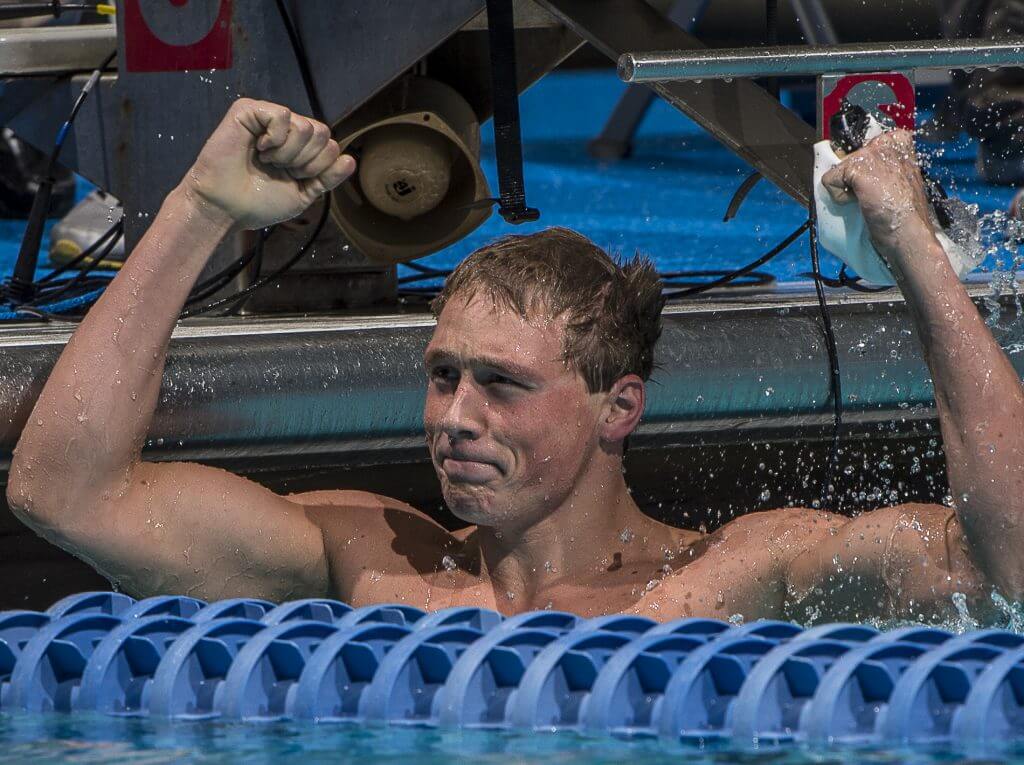
By Michael Grenon, Swimming World College Intern
At Men’s Division I NCAAs, did the freshmen win with their ingenuous enthusiasm? Or the sophomores with their adjustment year behind them? Maybe the juniors won, with the best of both experience and opportunity, or the seniors with the most college training in their muscles and minds. Maybe it was a four-way tie. Let’s find out.
Although college swimming is more like an entire culture and lifestyle, the NCAA Championships are directly won by points—nothing else. Of course, many varying details can lead to earning points, but in the end, the team that accumulates the most points by the end of NCAAs is crowned the nation’s best college team.
Hordes of superstars join college rosters every Fall. Although they may represent different college teams, each class somewhat makes up their own team. They’re all around the same age, and were recruited together. Sure, the University of Texas men won the 52-team battle last March, but a different four-team battle was fought by the 235 qualifiers. This battle of the classes is rarely analyzed—until now.
Note: Relays and diving are not included.
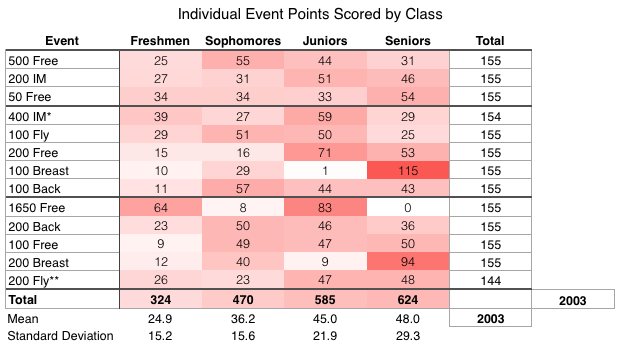
Figure 1: Individual Event Points Scored by Class. * Freshman Curtis Ogren was disqualified in the 400 IM consolation final. ** Sophomore Clark Smith was disqualified in the 200 Fly championship final.
Figure 1 shows each individual event and how many points were scored by each class. The intensity of red represents the relative proportion of points earned for the event. In other words, darker red cells show that the class was very dominant in that event. If we assume there was no difference between classes in the number of points they scored, they all should have scored around 39 points in each event.
Figure 2 shows that seniors scored 31.2% of the 2003 total individual event points awarded at the meet, followed closely by the juniors (29.2%), then the sophomores (23.5%) and lastly, the freshmen (16.2%). Overall, it looks like experience came out on top. Figure 3 below illustrates the points race in event order.
Fourth Place: Freshmen
It seems that the freshmen had the least amount of cumulative points at any point in the meet. Who could blame them? None have competed at NCAAs before and they were recently put into a brand new environment. This result wasn’t surprising.
Looking at Figure 4, freshmen were strongest in the mile, scoring 41.3% of the available points thanks to several young distance studs. Michigan runner-up PJ Ransford dropped over 15 seconds from his seed to break two 31-year old NAG records in the same race. Rookies Anton Ipsen (NC State), Akaram Mahmoud (South Carolina), and Evan Pinion (Tennessee) also scored in the top-eight.
Most valuable individual performers included Texas’s Joseph Schooling (49 points), Florida’s Caeleb Dressel (35 points), and Georgia’s Gunnar Bentz (27 points).
No other significant trends were found among the freshmen event distribution. They averaged 24.9 points per individual event.
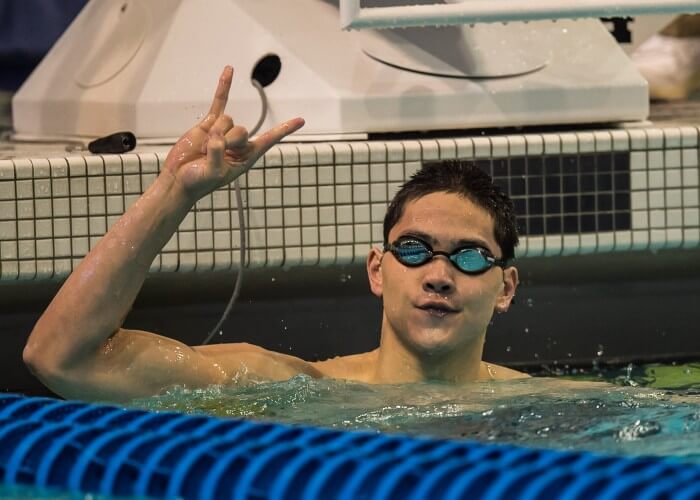
Joseph Schooling at the 2015 NCAA Division I Men’s Swimming and Diving Championship. Photo Courtesy: Peter H. Bick
Third Place: Sophomores
The sophomores were competitive throughout the first few events, but eventually couldn’t match the depth of the upperclassmen. They did appear consistent throughout the meet, with no specific events, strokes, or distances really sticking out.
In contrast with the freshmen, their weakest event was the mile. Wisconsin’s Matt Hutchins was their highest finisher (10th), and Florida’s Mitch D’Arrigo scored a point (16th). Perhaps this class is more sprint-heavy, as they contributed greatly to relays.
MVPs include Texas’s Will Licon (57 points), California’s Ryan Murphy (54 points), and Texas’s Jack Conger (46 points). The class averaged 36.2 points per event.
Will Licon at the 2015 NCAA Division I Men’s Swimming and Diving Championship. Photo Courtesy: Peter H. Bick
Second Place: Juniors
The juniors had incredible depth, and were leading the class point total throughout most of the meet. They stole more than half of the available points in the mile thanks to Georgia’s Mathias Koski (1st), Northwestern’s Jordan Wilimovsky (3rd), and Utah’s Bence Kiraly (4th), among others.
However, breaststroke proved to be their kryptonite, with only ten total points earned in breaststroke races. Besides breaststroke, the juniors were consistent in scoring above the expected 39-point average in nearly every other event.
MVPs for the junior class include Michigan’s Dylan Bosch (43 points), California’s Josh Prenot (40 points), and NC State’s Simonas Bilis (39 points). As a whole, they scored an average of 45.0 points per event.
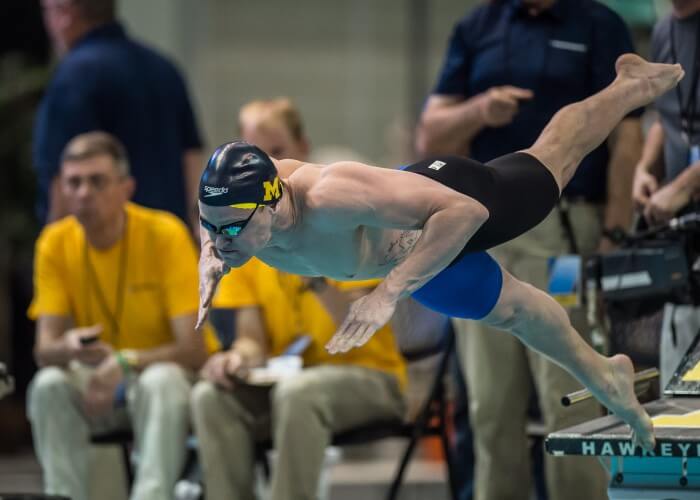
Dylan Bosch at the 2015 NCAA Division I Men’s Swimming an Diving Championship. Photo Courtesy: Peter H. Bick
First Place: Seniors
Finally, we have the seniors—the champions. The oldest, wisest, and most experienced class. They made sure to give it their all in their last year of eligibility, and their stats are perhaps most interesting.
They were so dominant in breaststroke that they left a glaring hole that returning swimmers are looking to fill. Western Kentucky sophomore Fabian Schwingenschlogl (transferring to Mizzou next season) was the only non-senior in the 100 breaststroke championship final.
Also notable was their dominance in sprint freestyle and, in contrast, near-absence in the mile. Cal State Bakersfield’s Mitchell Huxhold led the four total seniors in the mile, placing 19th.
MVPs: Stanford’s David Nolan (53 points), Southern California’s Christian Quintero (50 points), and Michigan’s Bruno Ortiz (39 points). Averaging 48.0 points per event, the class of 2015 was the 2015 NCAA Division I Men’s Swimming class champion.
In Conclusion
The order of classes shouldn’t be shocking. A common assumption is that older male college swimmers perform better, and these results definitely support that. However, would this trend remain every new season? Has it always been this way? Maybe the class of 2015 was just superior to other classes. Does women’s NCAAs also follow this trend? How about across divisions?
Every new wave of NCAA athletes leads to new possibilities. This time, experience proved superior, but anything can happen next year. For the athletes that enter this new stage together, their efforts may be blended with their college team, but every class has a unique identity that secretly races the others.




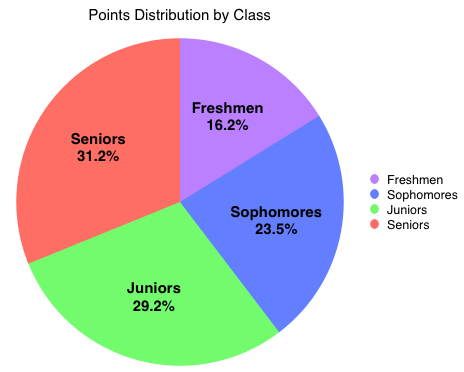
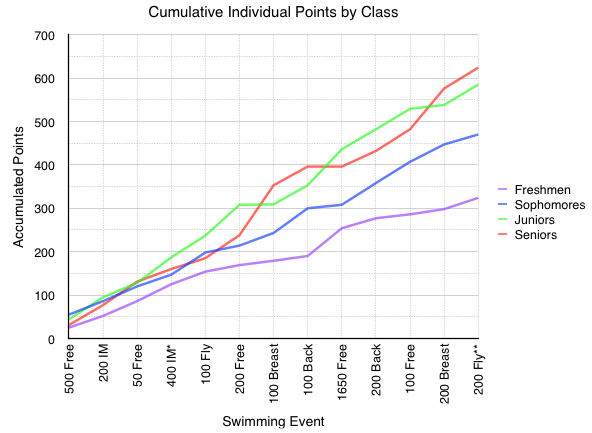
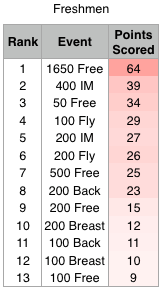
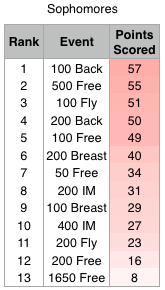
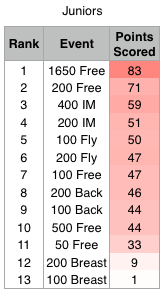
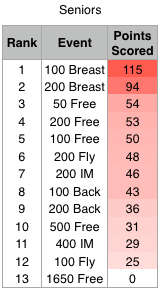
Excellent article, experience counts in college swimming. What about the women?